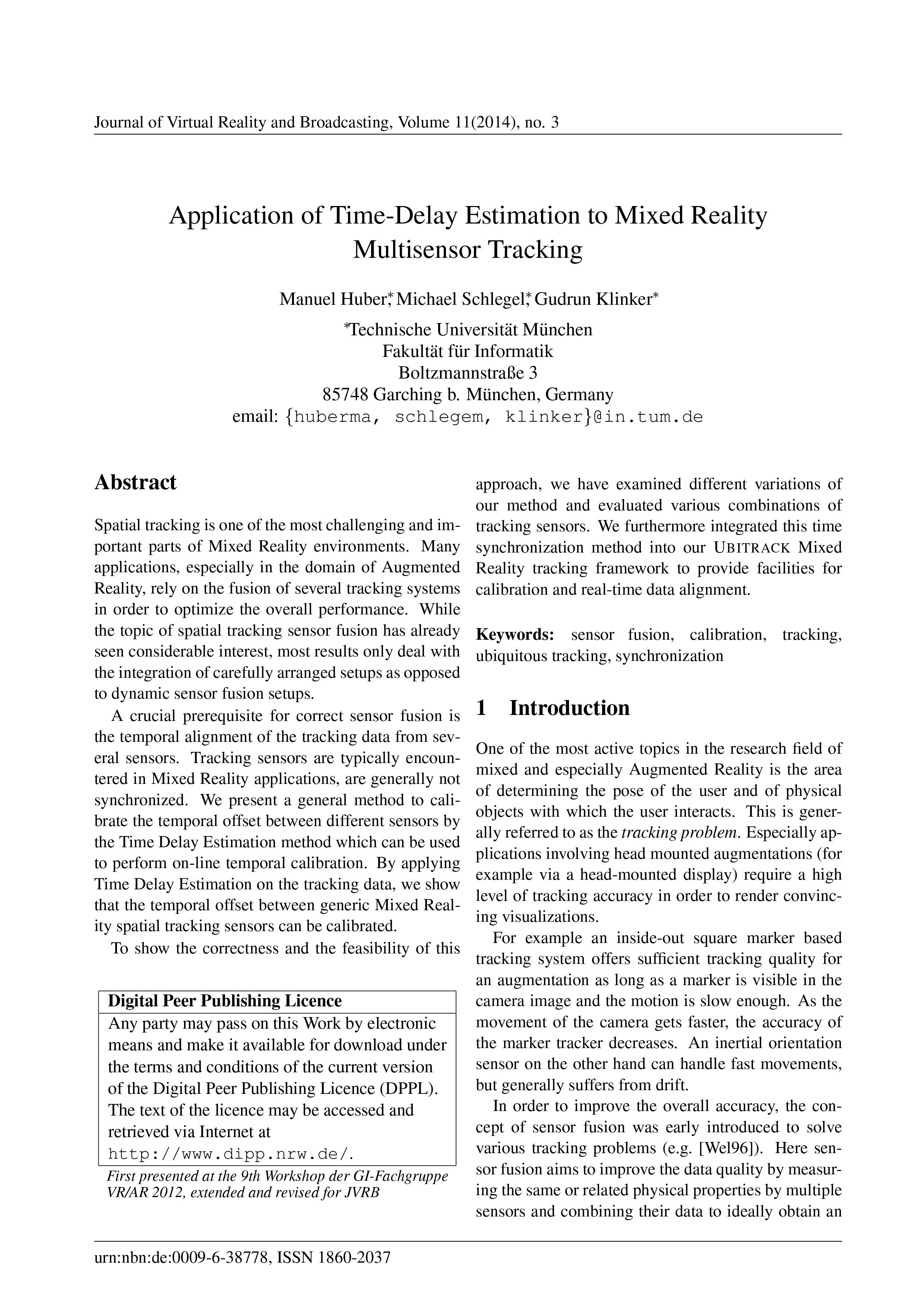Application of Time-Delay Estimation to Mixed Reality Multisensor Tracking
DOI:
https://doi.org/10.20385/1860-2037/11.2014.3Keywords:
calibration, sensor fusion, synchronization, tracking, ubiquitous trackingAbstract
Spatial tracking is one of the most challenging and important parts of Mixed Reality environments. Many applications, especially in the domain of Augmented Reality, rely on the fusion of several tracking systems in order to optimize the overall performance. While the topic of spatial tracking sensor fusion has already seen considerable interest, most results only deal with the integration of carefully arranged setups as opposed to dynamic sensor fusion setups. A crucial prerequisite for correct sensor fusion is the temporal alignment of the tracking data from several sensors. Tracking sensors are typically encountered in Mixed Reality applications, are generally not synchronized. We present a general method to calibrate the temporal offset between different sensors by the Time Delay Estimation method which can be used to perform on-line temporal calibration. By applying Time Delay Estimation on the tracking data, we show that the temporal offset between generic Mixed Reality spatial tracking sensors can be calibrated. To show the correctness and the feasibility of this approach, we have examined different variations of our method and evaluated various combinations of tracking sensors. We furthermore integrated this time synchronization method into our UBITRACK Mixed Reality tracking framework to provide facilities for calibration and real-time data alignment.
Published
2014-12-09
Issue
Section
GI VR/AR 2012





